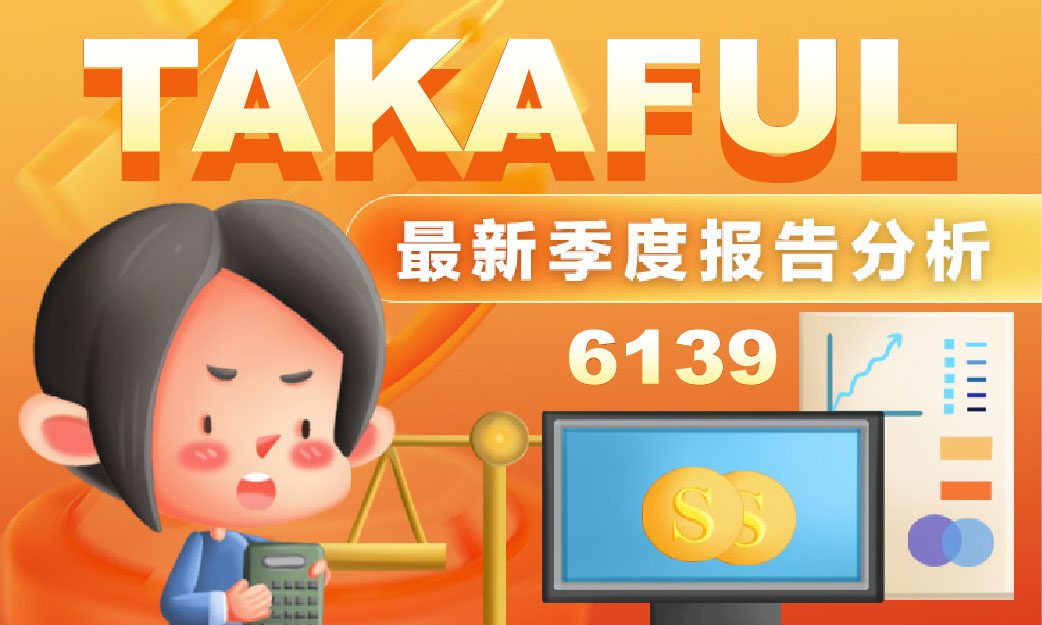“`html
Syarikat Takaful Malaysia Keluarga Berhad: Steady Revenue Growth Amidst Market Headwinds in Q2 2025
Syarikat Takaful Malaysia Keluarga Berhad, a leading name in Malaysia’s Takaful industry, has just released its financial results for the second quarter ended June 30, 2025. The report reveals a story of resilient top-line growth and a strengthening balance sheet, even as the company navigates a challenging economic environment. While revenue continues to climb, profitability shows signs of pressure compared to the previous year. Let’s dive deeper into the key figures and strategic moves shaping the company’s performance.
For the first half of 2025, the Group’s Takaful revenue surged by an impressive 9% to RM1.85 billion, while its balance sheet grew stronger with a 16% increase in shareholders’ equity.
Core Data Highlights: A Tale of Two Halves
While the year-to-date performance shows strong revenue growth, the quarterly results paint a more nuanced picture of stability. The pre-tax profit remained consistent with the same period last year, but net profit saw a slight decline.
Quarterly Performance Snapshot (Q2 2025 vs Q2 2024)
Here’s a direct comparison of the key financial metrics for the current quarter against the corresponding quarter last year.
Q2 2025 (Current Quarter)
- Takaful Revenue: RM 867.1 million
- Profit Before Zakat & Taxation: RM 135.9 million
- Profit for the Period: RM 83.9 million
- Basic Earnings Per Share (EPS): 9.61 sen
Q2 2024 (Corresponding Quarter)
- Takaful Revenue: RM 862.5 million
- Profit Before Zakat & Taxation: RM 136.6 million
- Profit for the Period: RM 93.7 million
- Basic Earnings Per Share (EPS): 11.12 sen
The quarterly results show that Takaful revenue grew by a modest 1%, while profit before tax was nearly flat. The decrease in net profit and EPS suggests pressure on the bottom line, which the report attributes partly to fair value losses on equity investments and higher acquisition costs in the Family Takaful segment for the quarter.
Business Segment Breakdown: Family Takaful Leads the Charge
The Group’s overall performance is a sum of its parts, with the Family and General Takaful segments showing different trajectories in the first half of the year.
| Segment (First Half 2025) | Takaful Revenue (H1 2025) | Takaful Revenue (H1 2024) | Change |
|---|---|---|---|
| Family Takaful | RM 1.09 billion | RM 929.2 million | +18% |
| General Takaful | RM 694.6 million | RM 716.7 million | -3% |
The Family Takaful business was the clear growth engine, posting an 18% increase in revenue. This was driven by a higher amount charged for Takaful coverage, especially from the credit protection business, and a higher contribution release. Conversely, the General Takaful segment saw a slight 3% decline in revenue, primarily due to lower contributions from the Fire Takaful segment.
A Stronger Financial Foundation
Beyond the income statement, the company’s financial position has visibly strengthened since the end of 2024.
- Total Assets grew by 5% to RM17.54 billion, up from RM16.7 billion. This was mainly due to higher investments and cash balances.
- Shareholders’ Equity saw a robust 16% increase, reaching RM2.23 billion. This was fueled by profits generated during the period, an increase in fair value reserves from Sukuk investments, and the issuance of new shares under its Dividend Reinvestment Plan (DRP).
- Consequently, Net Assets Per Share improved to RM2.56 from RM2.29 at the end of 2024.
Navigating the Future: Risks and Strategic Outlook
The company remains proactive in its strategy, acknowledging both the opportunities and challenges ahead. The management highlighted several key factors influencing its future direction.
On the risk front, the revised Malaysian GDP growth projection for 2025 (forecasted between 4.0% and 4.8%) and increased market volatility from global trade policies, such as US tariffs, present macroeconomic headwinds. However, the company is confident that domestic demand for Takaful will remain strong, driven by the persistent “protection gap” in the country.
Strategically, Syarikat Takaful Malaysia Keluarga Berhad is making significant moves:
- Strengthening Partnerships: A new twenty-year bancatakaful agreement with RHB Islamic Bank was recently secured. This long-term partnership is set to bolster its distribution network and reinforce its market leadership.
- Digital Transformation: The digital platform, Kaotim, is a key strategic focus. Aimed at the direct-to-retail market, it provides customers with affordable and accessible Takaful products and is being developed as an important engine for new customer acquisition and growth.
- Commitment to Sustainability: The Group continues to emphasize its holistic approach to sustainability, integrating strong governance, environmental stewardship, and social contributions into its core operations.
Summary and Investment Recommendations
Syarikat Takaful Malaysia Keluarga Berhad’s H1 2025 results demonstrate a company with a resilient business model. The strong performance of its Family Takaful segment drove impressive top-line growth, while its balance sheet strengthened significantly. Although net profitability faced some headwinds, the stable pre-tax profit indicates a solid operational core. Strategic initiatives, particularly the long-term RHB partnership and the push into digital channels with Kaotim, are forward-looking moves that position the company to capture future growth opportunities despite a volatile macroeconomic environment.
Key risks for investors to monitor include:
- Global economic uncertainties and market volatility stemming from international trade policies, which could impact investment income.
- A potential slowdown in Malaysia’s GDP growth, which may affect consumer spending and the demand for Takaful products.
- Intense competition within the domestic Takaful and insurance industry.
Final Thoughts
From my perspective, the report paints a picture of a fundamentally strong company navigating a complex macroeconomic landscape. The impressive growth in the Family Takaful segment and the strengthening balance sheet are commendable. The strategic focus on long-term partnerships and digital channels seems prudent for sustainable growth.
What are your thoughts on the new RHB partnership? Do you believe the ‘Kaotim’ digital platform will be a significant growth driver for the company? Share your insights in the comments below!
“`
